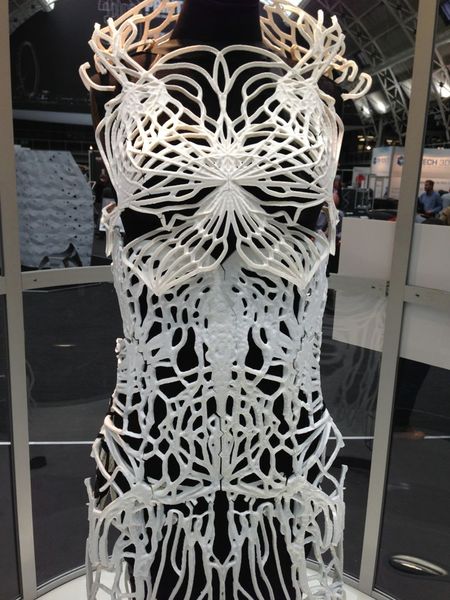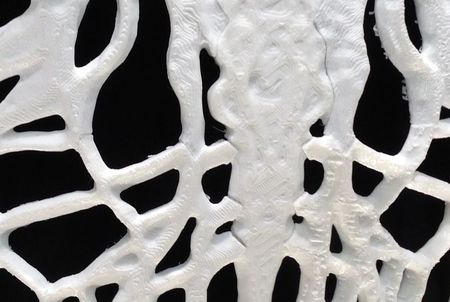The dress is not only unusual in appearance but also its material, availability and creation process. The piece was sponsored by MakerBot in a successful effort to display their new Flexible Filament material, which was used in the dress to implement all “joints” and areas requiring bending ability.
We’d like to point out that this dress is notable in that it is likely the very first 3D printed dress that can actually be produced on personal 3D printing equipment – previous 3D printed dresses had to be produced on expensive commercial equipment.
But producing one of these dresses is not for the faint of heart. On a MakerBot Replicator 2 the 59 individual pieces must be printed (some in PLA, some in Flexible Filament), which could take around 400 hours of printing. That’s over sixteen straight 24-hour days of printing!
Once the pieces are printed, you’ll spend at least 24 hours assembling the pieces. The flexible pieces first must have the support structures removed, which we understand is quite laborious. MakerBot recommends using “Loctite Two Part Professional Heavy Duty 5 Minute Epoxy” to connect the 59 pieces.
Sound challenging? If you’re up to it, feel free to download the components at Thingiverse.
Via Thingiverse




Sorry, that looks horrible and ridiculous, like pretty much all the wearable 3D printed items I've seen promoted so far. This one looks about as sexy as wearing a rib cage.